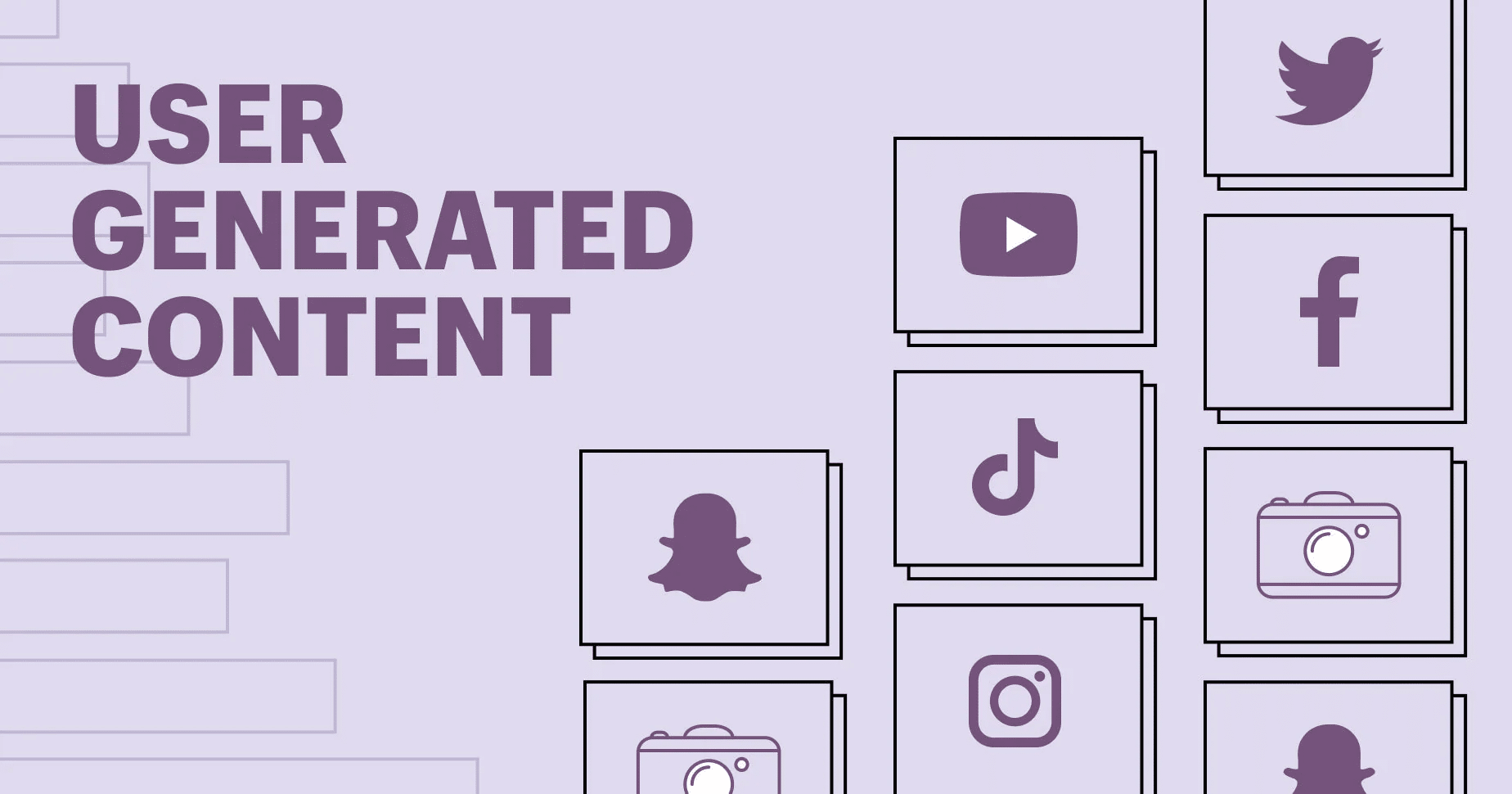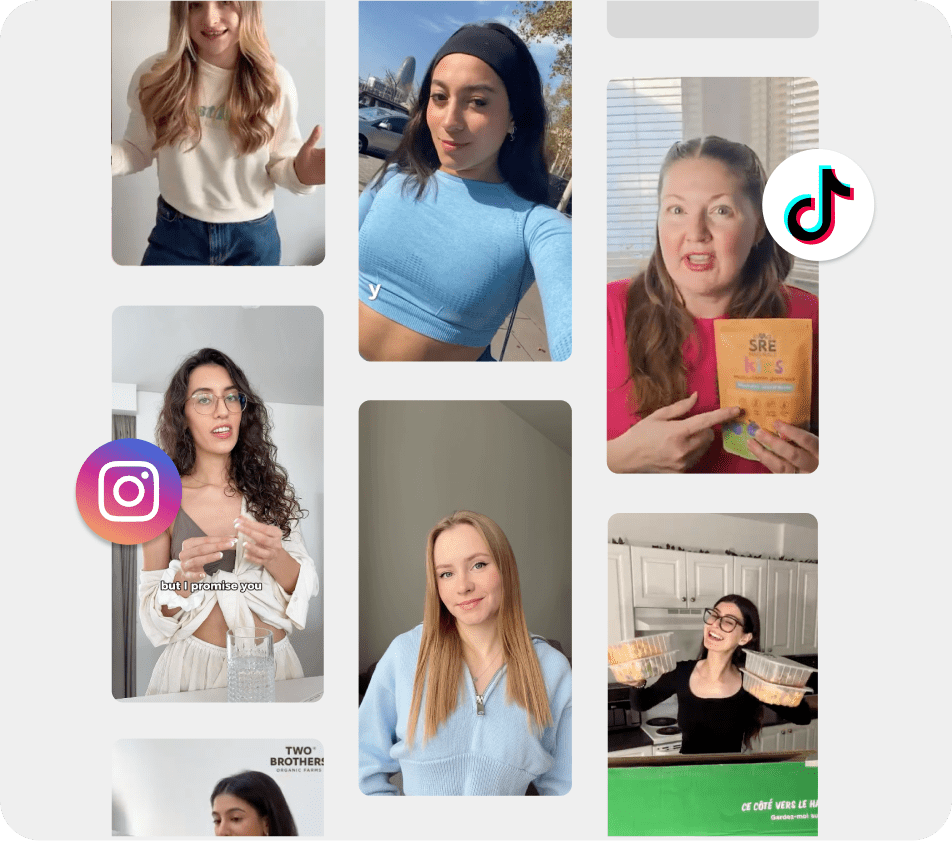Remember the last time you discovered a cozy coffee shop and shared a photo of your favorite brew on social media? Your post wasn’t just about a cup of coffee; it became a recommendation, influencing others to explore the place and try it for themselves. This simple act showcases the organic impact of UGC.
Imagine your coffee pic making a few friends want to try it, too. Now, think about this happening on a bigger scale! It’s pretty amazing, right? That’s exactly what brands are doing.
User-generated content (UGC) is the collective expression of individuals who, rather than being passive consumers, actively contribute to creating online content. It’s the posts, photos, reviews, and discussions shared by everyday people shaping a dynamic narrative that extends beyond traditional brand-driven communication.
This is what we will be discussing here today: the actual impact of user-generated content on the modern markets!
The Power of Customer Engagement
When businesses embrace User-Generated Content (UGC), it’s like saying, “Look, real people love us.” These real stories and experiences shared by your customers create an authentic vibe that’s way more trustworthy than any polished ad; in fact, the Nielsen Consumer Trust Index states that 92% of consumers trust organic, user-generated content more than they trust traditional advertising. It’s safe to say that it’s not just about selling a product anymore; it’s more about building a genuine connection based on real satisfaction.
Real Impact of User-Generated Content On the Modern Market
- Authenticity and Trust Building:
- UGC is often perceived as more authentic and trustworthy compared to branded content. Consumers tend to trust recommendations and reviews from fellow users, contributing to a more genuine connection with a brand.
- Social Proof:
- UGC serves as a powerful form of social proof. Positive reviews, testimonials, and user experiences shared on social media or other UGC platforms can influence potential customers and help build a positive brand image.
- Engagement and Interaction:
- Encouraging users to create content related to a brand or product fosters engagement. Contests, challenges, or user-generated campaigns can increase customer interaction and involvement, creating a sense of community around the brand.
- Cost-Effective Marketing:
- UGC is a cost-effective marketing strategy as it relies on users to create and share content voluntarily. This reduces the need for extensive advertising budgets while potentially reaching a wider audience through organic sharing.
- SEO Benefits:
- UGC can contribute to improved search engine optimization (SEO) by providing fresh and relevant content. Search engines often prioritize user-generated reviews and discussions, which can positively impact a brand’s online visibility.
- Product Development and Improvement:
- Brands can use UGC as valuable feedback for product development and improvement. Customer reviews and suggestions can provide insights into what works well and what needs enhancement, helping companies adapt to customer preferences.
- Influencer Marketing Amplification:
- UGC often overlaps with influencer marketing. When influencers create content about a product or brand, it becomes user-generated and benefits from the influencer’s credibility and reach, further amplifying the brand message.
- Brand Loyalty and Advocacy:
- Encouraging users to share their experiences and opinions can foster a sense of loyalty. Customers who actively contribute to a brand’s community are more likely to become advocates, recommending the brand to others.
- Personalization and Customization:
- UGC allows brands to personalize their marketing efforts by showcasing real customers and their unique experiences. This can create a more relatable and personalized connection with the target audience.
- Monitoring and Crisis Management:
- UGC provides an avenue for brands to monitor their online reputation. By actively engaging with user-generated content, companies can address concerns, respond to feedback, and manage crises promptly.
Influence on Purchase Decisions
Ever noticed how we tend to trust things others say or show us? That’s social proof, and it’s a big deal when it comes to making decisions. When people see others happy with a product or service in User-Generated Content (UGC), it’s like a thumbs-up from a friend.
According to a survey by Stackla, “79% of people say UGC highly impacts their purchasing decisions.”
Imagine scrolling through your social media and stumbling upon someone sharing about a product they love. That’s UGC in action. It’s not an ad telling you what’s cool and trying to sell their product; it’s a real person, like you and me, who is sharing what they love; now, what do you think its impact would be?
Let’s talk results. UGC isn’t just for show; it’s a key player in turning interest into action. When potential customers see others like them happily using a product or service, it becomes a nudge to make a choice. No fancy sales tactics are needed, just the real experiences shared through UGC that tip the scales and drive decisions. UGC becomes the real-deal influencer in the decision-making process.
Challenges and Opportunities for Businesses
User-generated content (UGC) comes with both challenges and exciting opportunities for your brand. As you dive into it, it’s crucial to understand the hurdles you might face and the doors that open when UGC becomes an integral part of your strategy.
Let’s explore these challenges and opportunities, recognizing that each presents a chance for growth and refinement in the ever-evolving realm of digital engagement.
- Managing and Moderating UGC
Handling the influx of User-Generated Content (UGC) can be a bit like juggling. It’s not just about gathering content but also ensuring it aligns with your brand values.
Moderating UGC is like keeping the show running smoothly, making sure everything stays positive and relevant. The challenge is real, but so are the opportunities – turning this diverse content into a cohesive brand story.
- Turning Negative UGC into Positive Brand Advocacy
Not every UGC is a glowing review. Sometimes, there’s a hiccup, and negative content pops up. But guess what? This is a chance to turn things around. Addressing concerns publicly, showing you care, and finding solutions can transform negative UGC into a powerful tool for building positive brand advocacy.
It’s similar to making lemonade out of lemons.
- Utilizing UGC Insights for Product Improvement
Your customers are your best critics, and UGC can be a goldmine of insights. Analyzing what people are saying, both good and bad, provides a roadmap for product improvement. It’s not just about selling; it’s about evolving.
UGC becomes a valuable tool for businesses to fine-tune their products based on real customer experiences, ensuring they stay in tune with market needs.
In the world of User-Generated Content, challenges are chances to innovate. Each hurdle is an opportunity for growth. As we navigate managing, moderating, and leveraging UGC, remember every challenge is a step toward refining our approach.
Transforming negatives into positives and using insights for improvement are the keys to unlocking the full potential of UGC.
Benefits Of Using User-Generated Content in Your Marketing
- Authenticity Reigns:
UGC is a beacon of authenticity. It’s real people sharing real experiences, creating a genuine and trustworthy connection between brands and their audiences.
- Building Trust:
The Nielsen Consumer Trust Index attests that 92% of consumers trust organic, user-generated content more than traditional advertising, making UGC a powerful tool for building trust.
- Enhanced Engagement:
UGC boosts engagement levels significantly. Social Media Today notes a 28% higher engagement rate for social media posts featuring user-generated content compared to standard brand posts.
- Influencing Purchase Decisions:
UGC acts as a guiding light in the decision-making process. Potential customers are more likely to trust and make decisions based on the experiences shared by their peers.
- Cost-Effective Content Creation:
UGC is a goldmine of content created by your audience for free. It reduces the need for extensive, expensive content creation, allowing brands to harness the creativity of their community.
- Loyalty and Advocacy:
Positive UGC turns customers into loyal fans and advocates. When customers actively share their positive experiences, they become brand ambassadors, willingly promoting the brand to their networks.
- Insights for Improvement:
Analyzing UGC provides valuable insights into customer preferences and experiences. This feedback loop becomes a tool for continuous improvement, guiding product development and marketing strategies.
- Expanded Reach:
UGC has the potential to reach a broader audience. When users share content, it often extends beyond the immediate circle, amplifying brand visibility and attracting new customers.
- Emotional Connections:
UGC allows brands to tap into the emotional aspect of consumer experiences. Real stories and testimonials create emotional connections, making the brand more relatable and memorable.
- Diverse Content:
UGC brings diversity to content. It showcases a range of perspectives, experiences, and creativity, adding depth and richness to the brand narrative.
In essence, the benefits of User-Generated Content extend far beyond just content creation; they touch upon trust, engagement, influence, and the creation of a community around a brand.
Conclusion
Embracing User-Generated Content is not just a strategy; it’s an acknowledgment of the power of real voices in shaping the narrative. As businesses continue to leverage UGC, they amplify their reach and become active participants in a dynamic and ever-evolving dialogue with their audience, forging connections that extend far beyond the digital domain.





